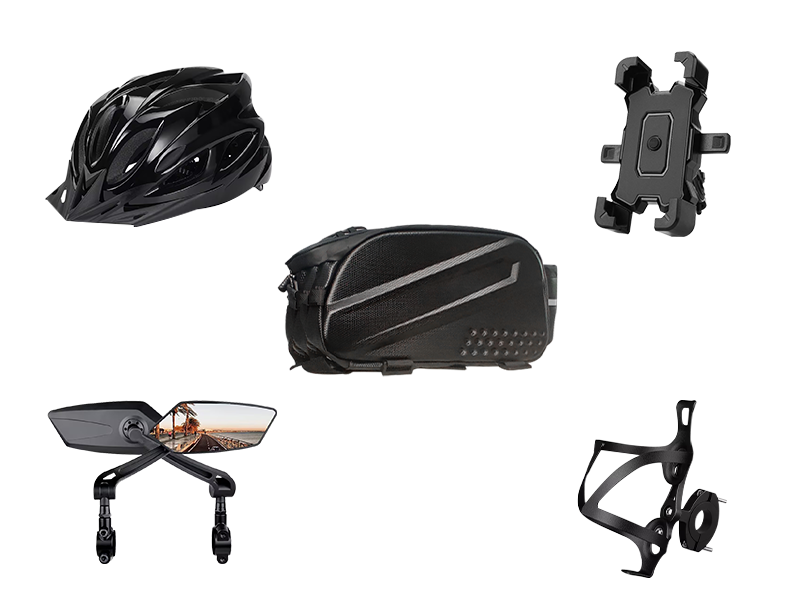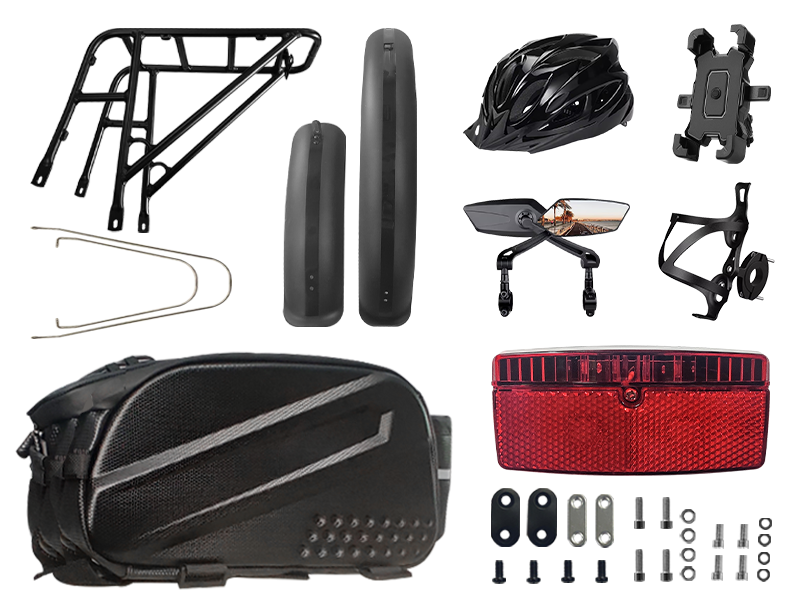How to Measure e-Bike Battery Capacity: A Comprehensive Guide
DEC 13, 2024
When it comes to electric bikes (e-bikes), one of the most important factors influencing performance is the battery. Whether you’re a seasoned cyclist or a newbie to the world of e-bikes, understanding how to measure e-bike battery capacity is crucial for optimizing your ride. A bigger capacity means longer rides, more power, and ultimately more fun! But how exactly do you measure that? Let’s dive into it.
1. What Is Battery Capacity?
Battery capacity refers to how much energy a battery can store and deliver to power your e-bike. It is typically measured in watt-hours (Wh). The higher the watt-hour rating, the more energy the battery can store, and thus, the longer your ride time will be before needing a recharge.
2. The Formula for Measuring Battery Capacity
To calculate the capacity of an e-bike battery, you can use the following simple formula:
Battery Capacity (Wh) = Voltage (V) × Amp-Hours (Ah)
-
Voltage (V): This is the electrical potential of the battery. Common e-bike battery voltages are 36V, 48V, or even higher. A higher voltage allows the bike to deliver more power, especially at higher speeds or for tackling steeper hills.
-
Amp-Hours (Ah): This is a measure of how much charge the battery can hold. The higher the amp-hour rating, the longer the battery will last on a single charge.
For example, if you have a 48V battery with a capacity of 10Ah:
Battery Capacity = 48V × 10Ah = 480Wh
This means your battery can supply 480 watts of power for one hour, or less power over a longer period.
3. What Does Battery Capacity Mean for You?
Knowing your battery’s capacity helps you understand how far you can ride before needing to recharge. Here’s what you should know:
-
Higher Capacity = Longer Range: A battery with a higher Wh rating will generally provide a longer range. For example, a 500Wh battery could take you between 30 to 50 miles on a single charge, depending on factors like rider weight, terrain, and level of pedal assistance.
-
Battery and Motor Compatibility: A higher voltage battery is typically paired with more powerful motors to deliver better performance, especially on hilly terrain or for riders who want to go faster.
4. Factors That Affect e-Bike Battery Capacity and Performance
While battery capacity gives you a basic idea of how far you can go, several factors influence the actual performance:
-
Terrain and Elevation: Riding on flat terrain will drain the battery less quickly than hilly or mountainous terrain. Steep inclines demand more power, shortening your range.
-
Riding Style: If you prefer higher pedal assistance settings or use the throttle more often, your battery will deplete faster. Riding conservatively or using lower power levels will extend battery life.
-
Temperature: Extremely hot or cold weather can negatively impact battery performance. Cold temperatures especially can reduce a battery's range.
-
Rider Weight: A heavier rider will require more energy to move the bike, thus reducing the overall range.
5. How to Extend the Life of Your e-Bike Battery
Understanding your e-bike’s battery capacity is just the first step. To maximize the performance and lifespan of your battery, consider these tips:
-
Avoid Completely Discharging Your Battery: Try to recharge your battery before it reaches 0%. Keeping it between 20% and 80% charged is ideal for maintaining its health.
-
Store Your Battery Properly: If you're not using your e-bike for a while, store the battery in a cool, dry place. Extreme temperatures can cause long-term damage to the battery.
-
Use Your Battery Efficiently: Pedal more to conserve battery power, especially on flat terrain or downhill stretches. The more you rely on pedaling, the less you’ll rely on the motor, which helps conserve battery.
6. Choosing the Right Battery for Your e-Bike
When shopping for an e-bike or considering a battery upgrade, understanding battery capacity helps you make an informed decision. Choose a battery with the appropriate voltage and amp-hour rating that suits your riding habits and terrain. If you plan on taking long rides or tackling steep hills, you’ll need a higher capacity battery. On the other hand, if you stick to flat terrain and shorter trips, a lower capacity battery could suffice.
7. Conclusion: Battery Capacity = More Freedom
Understanding how to measure e-bike battery capacity allows you to make the most of your e-bike experience. Whether you’re looking for a longer range, more power, or simply trying to figure out how much ride time you have left, knowing your battery capacity and the factors that influence it will help you get the most out of your e-bike. Always choose the battery size that matches your riding style, and follow proper care and charging practices to ensure your battery performs optimally for years to come.
Ready to ride further and smarter? Know your battery, and enjoy the freedom that comes with it!












